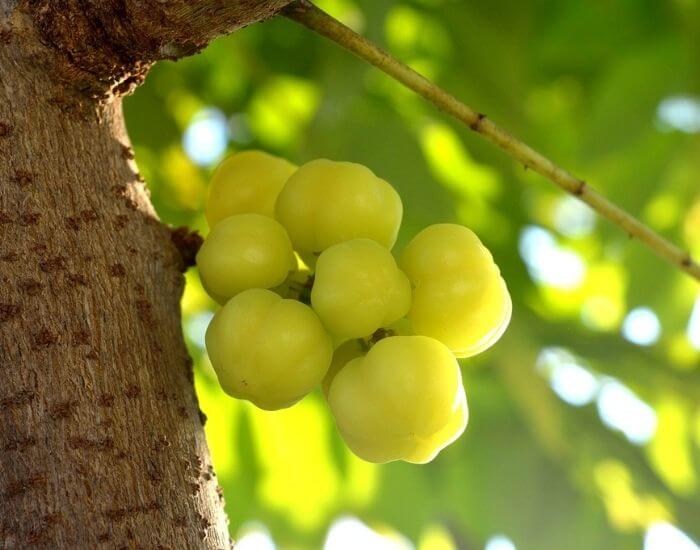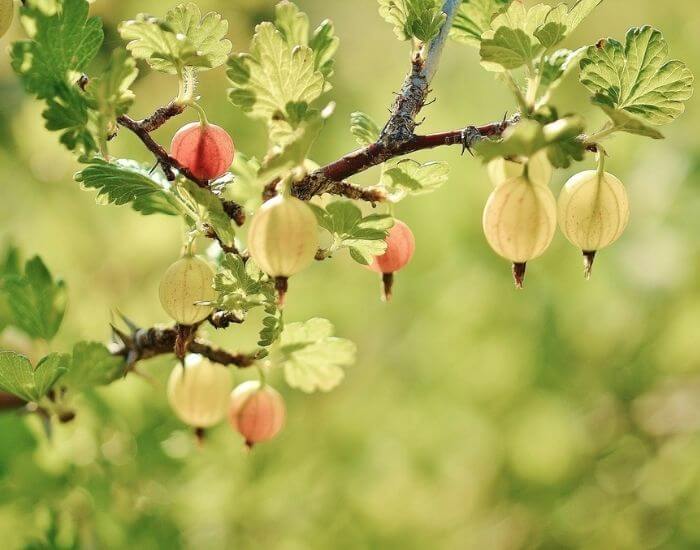Vines are plants that grow on other plants. When they produce fruit, they are called vine fruits. Vining fruits can be found in many different areas of the world.
They are used for medicinal purposes and as an ingredient in dishes. Some examples of vining fruits are tamarind, sweet potato vine, jack fruit, and passion fruit.
In the article we’ll explore different types of vine fruits, where they grow, their benefits and more. So, if you are looking for a comprehensive list, read on.
Fruits that grow on vines
1. Passion fruit
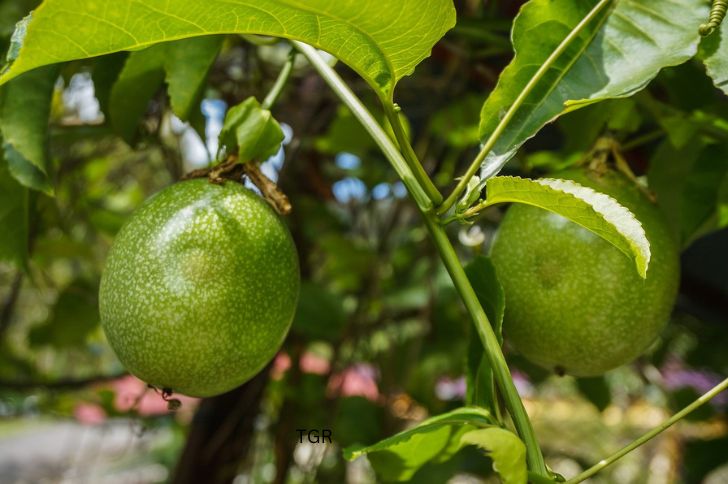
Passion fruit is a tropical vine fruit. It belongs to a group of citrus fruits that includes grapefruit. The size of the fruit can vary depending on its ripeness. When the passion fruit is ripe, it splits in half and seeds are visible.
Unlike most fruits, these seeds are edible! It also has a very sweet flavor that resembles the flavor of a mix between a pineapple and a grapefruit.
Passion vine plant fruit grows in usda zones 9-11. A seed takes up to 20 days to germinate or you can grow this vine via cuttings.
The plant is easy to grow and can be grown in containers. Passion fruit does well in well-draining and rich soil. Add well-aged soil and mulch to ensure vigorous growth.
Purple passion fruit vines can grow up 20 feet under the full sun. You’ll need a trellis to support this climbing plant. A fully grown fruit measures up to 3 inches long flavor .and a fully grown yellow passion can weigh up to 2.8 ounces.
2. Dragon Fruit
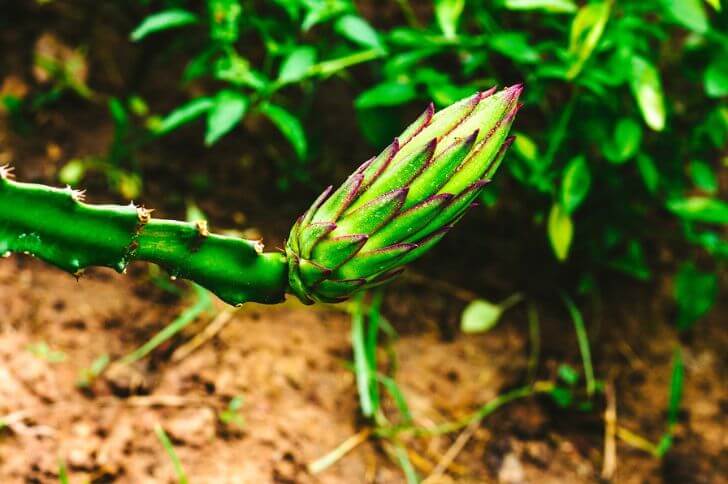
Dragon fruit is a fruit that is a variety of cactus pear. Dragon fruits are grown on vines and typically grow in humid, subtropical. The unique shape of the fruit gives it its name because its bright orange color resembles that of a dragon’s scales. It has a mild taste that resembles a mixture of figs and strawberries. If you live in any of these areas, your can grow this fruit in your garden.
The dragon fruits is able to grow and produce fruit in usda zones 9 through 11. Cut open a mature fresh fruit, gather a few seeds and dry them.
Once dried, you can plant them on the ground or containers. A small dragon vine plant needs support and we recommend you use bamboo sticks which are stronger compared to other trees.
A dragon fruit plant takes up to 8 months to start flowering. The yellow dragon plant has white and yellow flowers while the red dragon plant produces red flowers. A mature plant can produce fruits for 20-30 years and will need sturdy support, such as a fence.
3. Sugar cube cantaloupe fruit plants
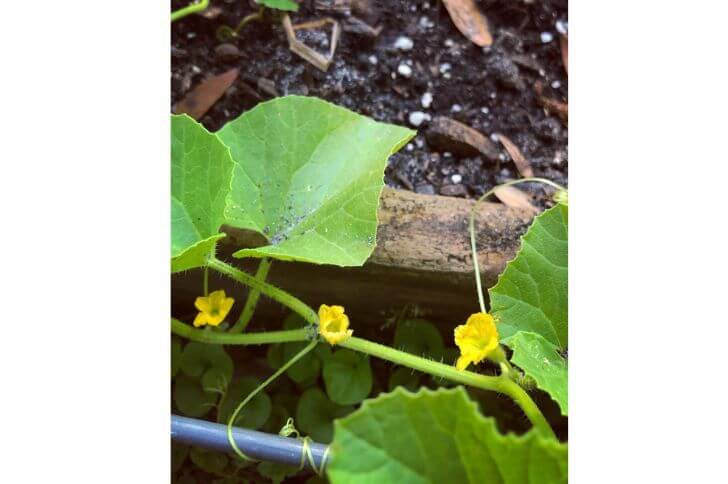
Sugar cube cantaloupe is a vine fruit that has been eaten since the 8th century. It’s believed to have originated in the country of Peru, but only recently has it been gaining popularity in the United States.
The plant is considered to be very hardy and can survive winters by being brought indoors where there are no frost risks.
The sugar cube cantaloupe is a fruit that grows in zones 4 through 10. Most varieties bear large fruits that can weigh up to 4 pounds and take from 65 – 90 days to mature.
Its vines spread thick and wide, so if you have a small garden we recommend you provide support so it can grow in a vertical position. You can support your plants on a pergola, trellises, tomato cage or support with bamboo sticks.
Related Read: Here are the different types of fruits that start with y
4. Hardy kiwi fruits
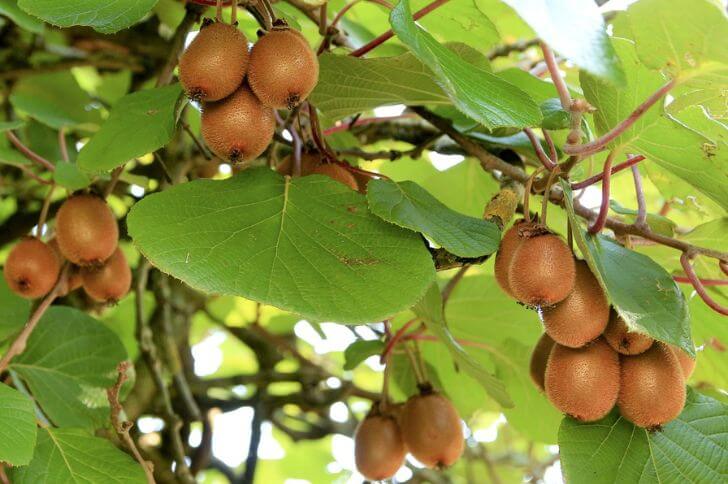
The kiwi fruit is a vine fruit that is considered to be in the same family as the common fig, mulberry, and grapefruit. One of the most distinctive features of this fruit is its furry skin. The kiwi’s flesh is an edible part that has many benefits for your health.
Kiwis are rich in potassium, vitamin C, and fiber which help to control blood pressure, immunity levels, and digestion respectively. Kiwis grow on vines, which can be grown in USDA zones 7-9 (Sunset).
Like passionfruit, hardy kiwis can be trellised. You can grow them over your arbor or pergola. The hardy kiwi takes three years to mature. Ensure to put a net to protect against birds and fertilize in spring.
5. Honeydew melon
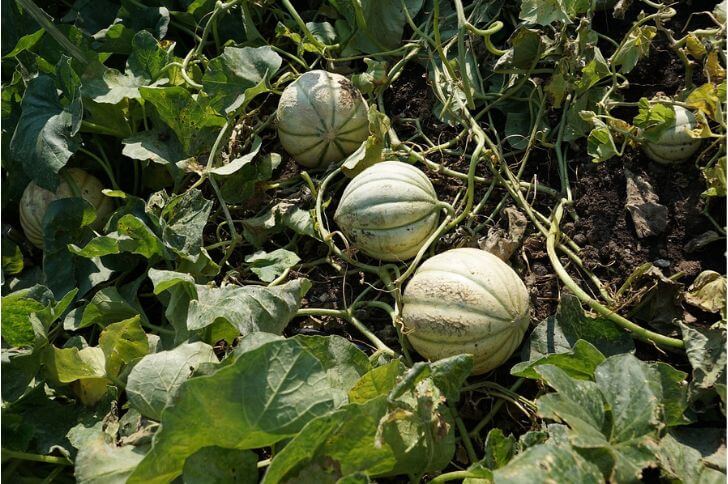
Honeydew melon is a vine fruit that originated in Africa. It’s now grown in California due to climate similarities. Honeydew melons are rich in potassium and vitamin C, but low in calories. The refreshing sweetness balances the acidity of other fruits, making it an ideal ingredient for fruit salads or dipping into yogurt.
Honeydew melon do well in zones 4 – 11. To grow this plant, start by sowing 3 or 4 seeds in a pot. Place the pot indoors until the seeds germinate.
Typically it takes anywhere from 10 -14 days to germinate. Once they’ve sprouted, transplant to your garden. Ensure the plants are well watered. Please note that fruits do not ripen off the vine. Pick the 4-8 pound fresh fruit when fully ripe.
6. Strawberries

It’s always a great summer day when strawberries are in season. With their juicy, sweet, and tangy flavor, they’re a welcome addition to any dish.
Strawberries can be used as a refreshing snack or a dessert after a filling meal. They’re also a good source of fiber and Vitamin C .There are more than 15 different types of strawberries available in the United States.They come in numerous colors, shapes, and sizes.
7. Raspberries
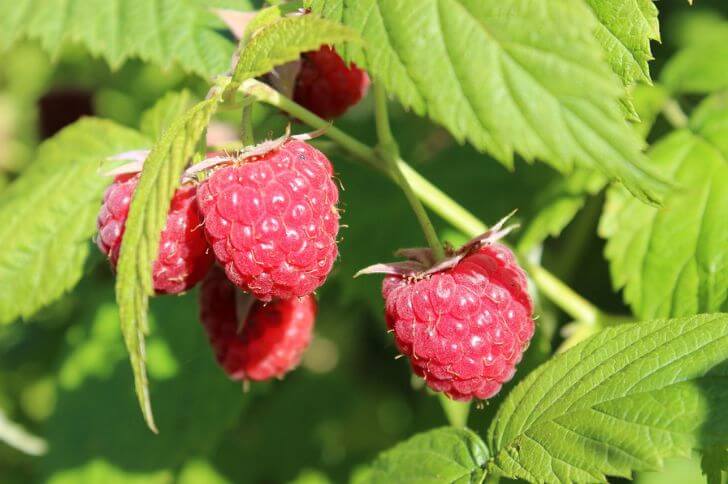
Raspberries are a type of berry that grows on vines. Raspberries are not only good for eating, but they are also great for baking pies, tarts, or cakes. They are often used as an ice cream flavor because of their sweet taste. Did you know that raspberries are high in vitamin C? Additionally, they have little to no calories which make them perfect for dieting!
8. Tomatoes

Tomatoes come in a variety of colors and shapes, and can be grown in almost any climate.
They are most often picked green and allowed to ripen off the vine, but some choose to harvest them later, for a sweeter flavor. Tomatoes are great for use in salads, sandwiches, and as a topping on pizza.
9. Watermelons

Many people enjoy the sweet and refreshing taste of watermelon. The plant is a vine, and it bears fruit on long, leafless stems called fruiting spurs.
A ripe watermelon is red with black seeds scattered throughout. It’s best to pick a watermelon that has a dark green exterior, which typically indicates that it is ripe.
The bottom should have a wide stem that does not have a point at the end, which will help you know that it is fresh.
10. Squashes
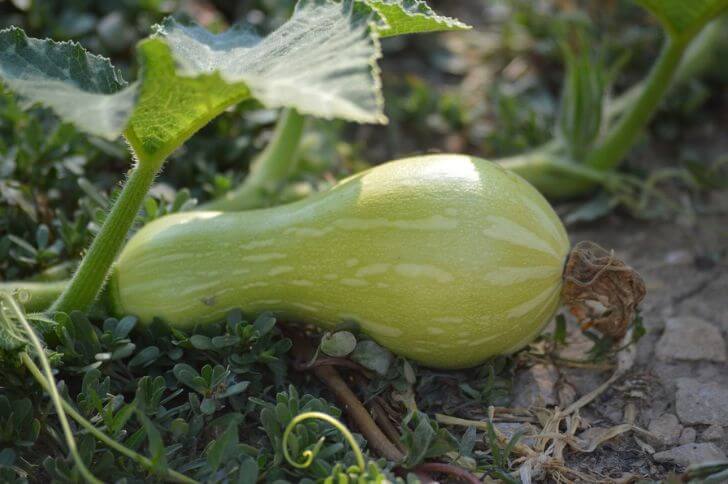
Squashes are a part of the gourd family of plants. They have thick, fleshy fruit with dry seeds. The flesh of squashes can be orange, green or yellow and is usually quite sweet and also edible.
Squash plants grow on vines and there are many different types of them often classified according to how large they are. One type of squash is the acorn squash which has a round oblong shape that tapers into a point at the stem end.
11. Gooseberries
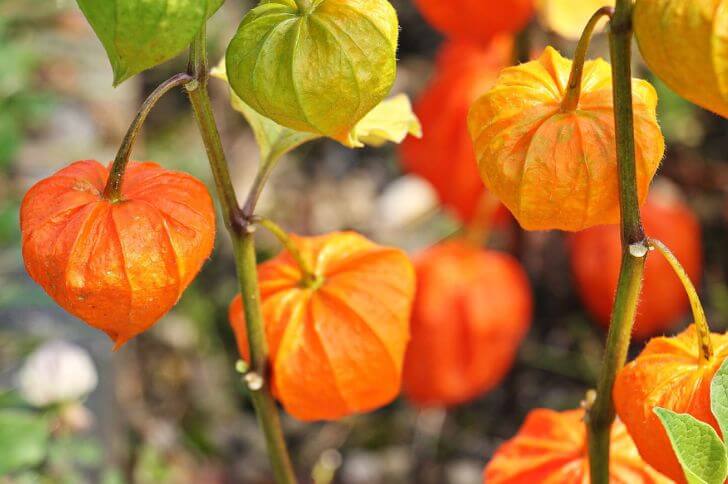
Gooseberries are a tart fruit that can be found in European, American and Asian varieties. And like other fruits on this list, gooseberries grow on vines.
The European variety has large oval or round shaped berries with a yellow-green skin when ripe and a red blush when ready to pick. These gooseberries can reach up to one inch in diameter and are sweet tasting when ripe, but acidic if under ripe.
American gooseberries have an oblong shape similar to a grape with a dark purple skin when ripe, sometimes having patches of white bloom on them. They tend to be smaller than their European counterparts but still have the same acidity level before ripening into their sweet flavor.
12. Blackberries
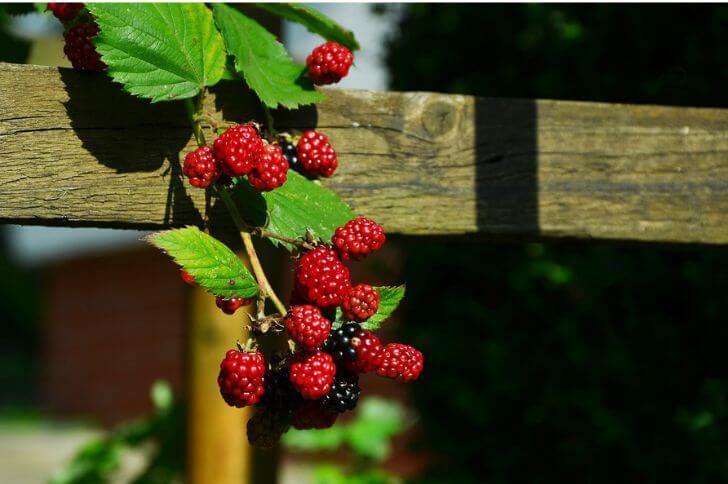
Blackberries are a tasty and nutritious fruit that can be identified by their color, shape, and taste. In general though they are easily recognized by their dark purple hue with a glossy sheen and the drupelets, which are small separate segments that make up the berry. Blackberries also have a distinctively tart and sweet flavor when ripe that sets them apart from other berries.
When searching for blackberries in stores or at farmers markets it is important to look for ones that feel heavy for their size as this usually indicates higher levels of juiciness. The skin should also be free from blemishes or bruises as these could mean the berry is overripe or damaged inside.
13. Ivy Gourd
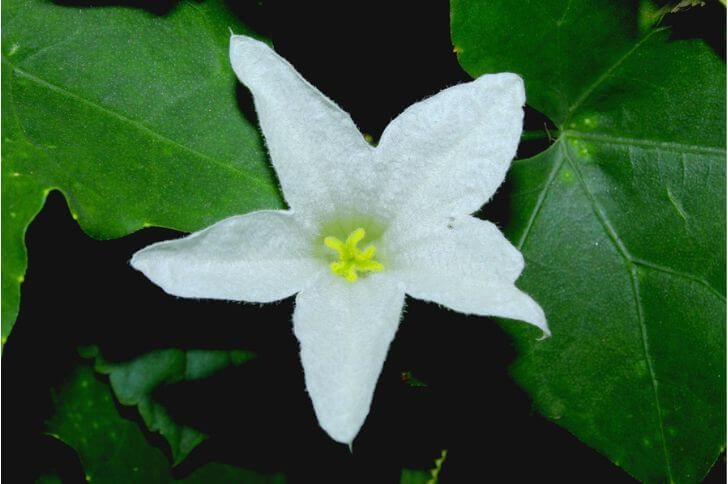
Ivy gourd, also known as kowai or scarlet gourd or tindora, is an edible perennial vine grown in tropical and subtropical climates. The plant produces oblong-shaped vine fruits that are commonly used in Asian cooking.
Ivy gourd has hand-shaped leaves with pointed tips. The stems of the vine are usually thin and have small tendrils that help the plant attach itself to other structures for support.
14. Cucumber

Probably one of the most confusing fruits on this list. Cucumbers have been classified as fruits because they grow from flowers and have seeds.
Slicing cucumbers are the most common variety and can be identified by their dark green color and long shape. Pickling cucumbers have a bumpy texture, thin skin, and grow no larger than six inches in length.
When attempting to identify a particular species of cucumber it’s important to take note of its physical characteristics such as size, color, shape and texture.
Final Thoughts on vine fruits
Vine fruit is a type of fruit that can grow on a vine. It can be eaten on its own or used as a garnishing for other dishes. Examples include peaches, grapes, and strawberries. These can be grown vertically on a trellis to maximize space and light by planting them close together.
Hi There,
My name is Jenny. I’m the Chief Editor at Try Green Recipes and besides making yummy and healthy foods for my kids, grandkids, and friends. I’m new to the blogging world but I believe what I have to share is unique and will bring joy to your home. If you are adventurous and want try something tasty, let’s get started.
